SLOS313C December 2000 – March 2016 TPA6111A2
PRODUCTION DATA.
- 1 Features
- 2 Applications
- 3 Description
- 4 Revision History
- 5 Device Comparison Table
- 6 Pin Configuration and Functions
-
7 Specifications
- 7.1 Absolute Maximum Ratings
- 7.2 ESD Ratings
- 7.3 Recommended Operating Conditions
- 7.4 Thermal Information
- 7.5 DC Electrical Characteristics, VDD = 3.3 V
- 7.6 AC Operating Characteristics, VDD = 3.3 V
- 7.7 DC Electrical Characteristics, VDD = 5.5 V
- 7.8 AC Operating Characteristics, VDD = 5.5 V
- 7.9 AC Operating Characteristics, VDD = 3.3 V
- 7.10 AC Operating Characteristics, VDD = 5 V
- 7.11 Typical Characteristics
- 8 Parameter Measurement Information
- 9 Detailed Description
- 10Application and Implementation
- 11Power Supply Recommendations
- 12Layout
- 13Device and Documentation Support
- 14Mechanical, Packaging, and Orderable Information
Package Options
Refer to the PDF data sheet for device specific package drawings
Mechanical Data (Package|Pins)
- D|8
- DGN|8
Thermal pad, mechanical data (Package|Pins)
- DGN|8
Orderable Information
7 Specifications
7.1 Absolute Maximum Ratings
over operating free-air temperature range (unless otherwise noted) (1)| MIN | MAX | UNIT | ||
|---|---|---|---|---|
| VDD | Supply voltage | 6 | V | |
| VI | Input voltage | –0.3 | VDD + 0.3 | V |
| Continuous total power dissipation | Internally Limited | |||
| TJ | Operating junction temperature | –40 | 150 | °C |
| Lead temperature 1,6 mm (1/16 inch) from case for 10 seconds | 260 | °C | ||
| Tstg | Storage temperature | –65 | 150 | °C |
(1) Stresses beyond those listed under Absolute Maximum Ratings may cause permanent damage to the device. These are stress ratings only, which do not imply functional operation of the device at these or any other conditions beyond those indicated under Recommended Operating Conditions. Exposure to absolute-maximum-rated conditions for extended periods may affect device reliability.
7.2 ESD Ratings
| VALUE | UNIT | |||
|---|---|---|---|---|
| V(ESD) | Electrostatic discharge | Human-body model (HBM), per ANSI/ESDA/JEDEC JS-001(1) | ±2000 | V |
| Charged-device model (CDM), per JEDEC specification JESD22-C101(2) | ±1500 | |||
(1) JEDEC document JEP155 states that 500-V HBM allows safe manufacturing with a standard ESD control process.
(2) JEDEC document JEP157 states that 250-V CDM allows safe manufacturing with a standard ESD control process.
7.3 Recommended Operating Conditions
| MIN | MAX | UNIT | ||
|---|---|---|---|---|
| VDD | Supply voltage | 2.5 | 5.5 | V |
| TA | Operating free-air temperature | –40 | 85 | °C |
| VIH | High-level input voltage (SHUTDOWN) | 60% × VDD | V | |
| VIL | Low-level input voltage (SHUTDOWN) | 25% × VDD | V |
7.4 Thermal Information
| THERMAL METRIC(1) | TPA6111A2 | UNIT | ||
|---|---|---|---|---|
| D (SOIC) | DGN (MSOP) | |||
| 8 PINS | 8 PINS | |||
| RθJA | Junction-to-ambient thermal resistance | 114.7 | 55.9 | °C/W |
| RθJC(top) | Junction-to-case (top) thermal resistance | 59.0 | 47.3 | °C/W |
| RθJB | Junction-to-board thermal resistance | 54.9 | 36.4 | °C/W |
| ψJT | Junction-to-top characterization parameter | 14.2 | 2.3 | °C/W |
| ψJB | Junction-to-board characterization parameter | 54.4 | 36.2 | °C/W |
| RθJC(bot) | Junction-to-case (bottom) thermal resistance | — | 9.2 | °C/W |
(1) For more information about traditional and new thermal metrics, see the Semiconductor and IC Package Thermal Metrics application report, SPRA953.
7.5 DC Electrical Characteristics, VDD = 3.3 V
at VDD = 3.3 V, TA = 25°C (unless otherwise noted)| PARAMETER | TEST CONDITIONS | MIN | TYP | MAX | UNIT | |
|---|---|---|---|---|---|---|
| VOO | Output offset voltage | 10 | mV | |||
| PSRR | Power supply rejection ratio | VDD = 3.2 V to 3.4 V | 70 | dB | ||
| IDD | Supply current | SHUTDOWN (pin 5) = 0 V | 1.5 | 3 | mA | |
| IDD(SD) | Supply current in shutdown mode | SHUTDOWN (pin 5) = VDD | 1 | 10 | µA | |
| Zi | Input impedance | > 1 | MΩ | |||
7.6 AC Operating Characteristics, VDD = 3.3 V
VDD = 3.3 V, TA = 25°C, RL = 16 Ω| PARAMETER | TEST CONDITIONS | MIN | TYP | MAX | UNIT | |
|---|---|---|---|---|---|---|
| PO | Output power (each channel) | THD ≤ 0.1%, f = 1 kHz | 60 | mW | ||
| THD+N | Total harmonic distortion + noise | PO = 40 mW, 20 Hz – 20 kHz | 0.4% | |||
| BOM | Maximum output power BW | G = 20 dB, THD < 5% | > 20 | kHz | ||
| Phase margin | Open-loop | 96° | ||||
| Supply ripple rejection | f = 1 kHz, C(BYP) = 0.47 µF | 71 | dB | |||
| Channel/channel output separation | f = 1 kHz, PO = 40 mW | 89 | dB | |||
| SNR | Signal-to-noise ratio | PO = 50 mW, AV = 1 | 100 | dB | ||
| Vn | Noise output voltage | AV = 1 | 11 | µV(rms) | ||
7.7 DC Electrical Characteristics, VDD = 5.5 V
at VDD = 5.5 V, TA = 25°C| PARAMETER | TEST CONDITIONS | MIN | TYP | MAX | UNIT | |
|---|---|---|---|---|---|---|
| VOO | Output offset voltage | 10 | mV | |||
| PSRR | Power supply rejection ratio | VDD = 4.9 V to 5.1 V | 70 | dB | ||
| IDD | Supply current | SHUTDOWN (pin 5) = 0 V | 1.6 | 3.2 | mA | |
| IDD(SD) | Supply current in shutdown mode | SHUTDOWN (pin 5) = VDD | 1 | 10 | µA | |
| |IIH| | High-level input current (SHUTDOWN) | VDD = 5.5 V, VI = VDD | 1 | µA | ||
| |IIL| | Low-level input current (SHUTDOWN) | VDD = 5.5 V, VI = 0 V | 1 | µA | ||
| Zi | Input impedance | > 1 | MΩ | |||
7.8 AC Operating Characteristics, VDD = 5.5 V
VDD = 5 V, TA = 25°C, RL = 6 Ω| PARAMETER | TEST CONDITIONS | MIN | TYP | MAX | UNIT | |
|---|---|---|---|---|---|---|
| PO | Output power (each channel) | THD ≤ 0.1%, f = 1 kHz | 150 | mW | ||
| THD+N | Total harmonic distortion + noise | PO = 100 mW, 20 Hz – 20 kHz | 0.6% | |||
| BOM | Maximum output power BW | G = 20 dB, THD < 5% | > 20 | kHz | ||
| Phase margin | Open-loop | 96° | ||||
| Supply ripple rejection ratio | f = 1 kHz, C(BYP) = 0.47 µF | 61 | dB | |||
| Channel/channel output separation | f = 1 kHz, PO = 100 mW | 90 | dB | |||
| SNR | Signal-to-noise ratio | PO = 100 mW, AV = 1 | 100 | dB | ||
| Vn | Noise output voltage | AV = 1 | 11.7 | µV(rms) | ||
7.9 AC Operating Characteristics, VDD = 3.3 V
VDD = 3.3 V, TA = 25°C, RL = 32 Ω| PARAMETER | TEST CONDITIONS | MIN | TYP | MAX | UNIT | |
|---|---|---|---|---|---|---|
| PO | Output power (each channel) | THD ≤ 0.1%, f = 1 kHz | 35 | mW | ||
| THD+N | Total harmonic distortion + noise | PO = 40 mW, 20 Hz – 20 kHz | 0.4% | |||
| BOM | Maximum output power BW | G = 20 dB, THD < 2% | > 20 | kHz | ||
| Phase margin | Open-loop | 96° | ||||
| Supply ripple rejection | f = 1 kHz, C(BYP) = 0.47 µF | 71 | dB | |||
| Channel/channel output separation | f = 1 kHz, PO = 25 mW | 75 | dB | |||
| SNR | Signal-to-noise ratio | PO = 90 mW, AV = 1 | 100 | dB | ||
| Vn | Noise output voltage | AV = 1 | 11 | µV(rms) | ||
7.10 AC Operating Characteristics, VDD = 5 V
VDD = 5 V, TA = 25°C, RL = 32 Ω| PARAMETER | TEST CONDITIONS | MIN | TYP | MAX | UNIT | |
|---|---|---|---|---|---|---|
| PO | Output power (each channel) | THD ≤ 0.1%, f = 1 kHz | 90 | mW | ||
| THD+N | Total harmonic distortion + noise | PO = 20 mW, 20 Hz – 20 kHz | 2% | |||
| BOM | Maximum output power BW | G = 20 dB, THD < 2% | > 20 | kHz | ||
| Phase margin | Open-loop | 97° | ||||
| Supply ripple rejection | f = 1 kHz, C(BYP) = 0.47 µF | 61 | dB | |||
| Channel/channel output separation | f = 1 kHz, PO = 65 mW | 98 | dB | |||
| SNR | Signal-to-noise ratio | PO = 90 mW, AV = 1 | 104 | dB | ||
| Vn | Noise output voltage | AV = 1 | 11.7 | µV(rms) | ||
7.11 Typical Characteristics
Table 1. Table of Graphs
| FIGURE | |||
|---|---|---|---|
| THD+N | Total harmonic distortion + noise | vs Frequency | Figure 1, Figure 3, Figure 5, Figure 6, Figure 7, Figure 9, Figure 11, Figure 13 |
| vs Output power | Figure 2, Figure 4, Figure 8, Figure 10, Figure 12, Figure 14 | ||
| Supply ripple rejection ratio | vs Frequency | Figure 15, Figure 16 | |
| Vn | Output noise voltage | vs Frequency | Figure 17, Figure 18 |
| Crosstalk | vs Frequency | Figure 19-Figure 24 | |
| Shutdown attenuation | vs Frequency | Figure 25, Figure 26 | |
| Open-loop gain and phase margin | vs Frequency | Figure 27, Figure 28 | |
| Output power | vs Load resistance | Figure 29, Figure 30 | |
| IDD | Supply current | vs Supply voltage | Figure 31 |
| SNR | Signal-to-noise ratio | vs Voltage gain | Figure 32 |
| Power dissipation and amplifier | vs Load power | Figure 33, Figure 34 | |
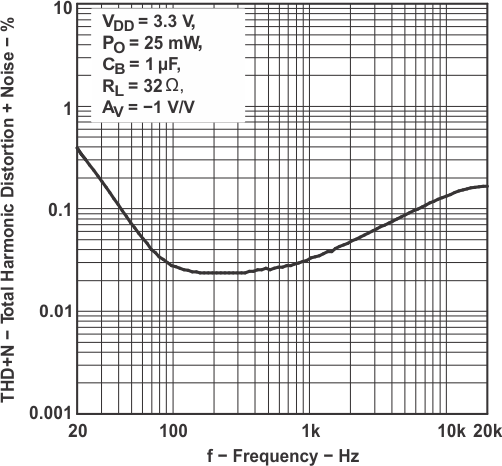 Figure 1. Total Harmonic Distortion + Noise vs Frequency
Figure 1. Total Harmonic Distortion + Noise vs Frequency
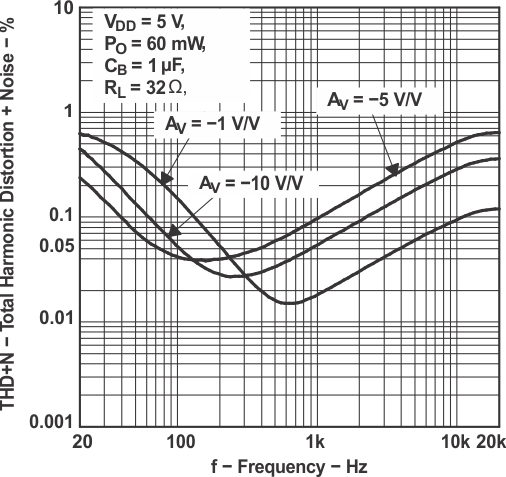 Figure 3. Total Harmonic Distortion + Noise vs Frequency
Figure 3. Total Harmonic Distortion + Noise vs Frequency
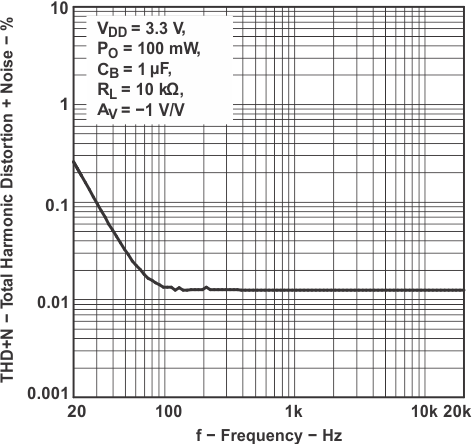 Figure 5. Total Harmonic Distortion + Noise vs Frequency
Figure 5. Total Harmonic Distortion + Noise vs Frequency
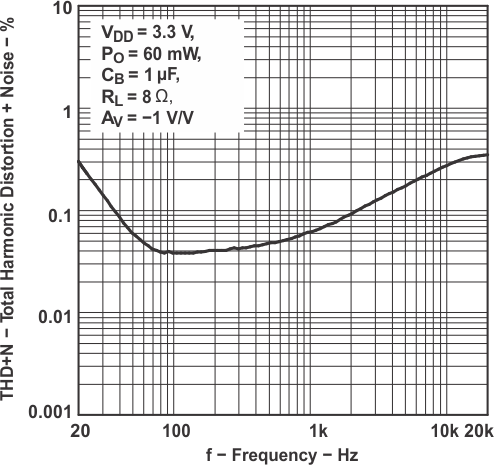 Figure 7. Total Harmonic Distortion + Noise vs Frequency
Figure 7. Total Harmonic Distortion + Noise vs Frequency
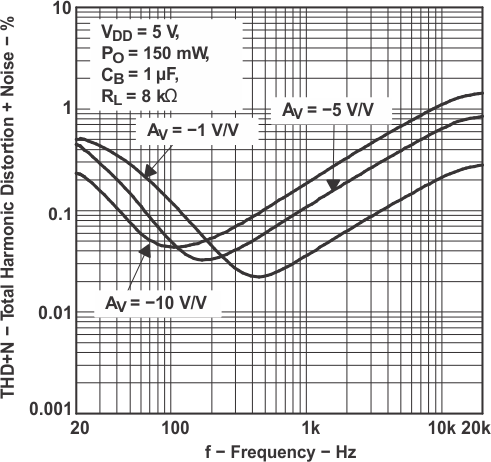 Figure 9. Total Harmonic Distortion + Noise vs Frequency
Figure 9. Total Harmonic Distortion + Noise vs Frequency
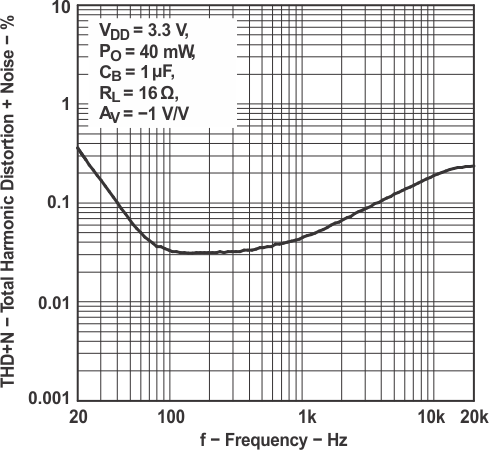 Figure 11. Total Harmonic Distortion + Noise vs Frequency
Figure 11. Total Harmonic Distortion + Noise vs Frequency
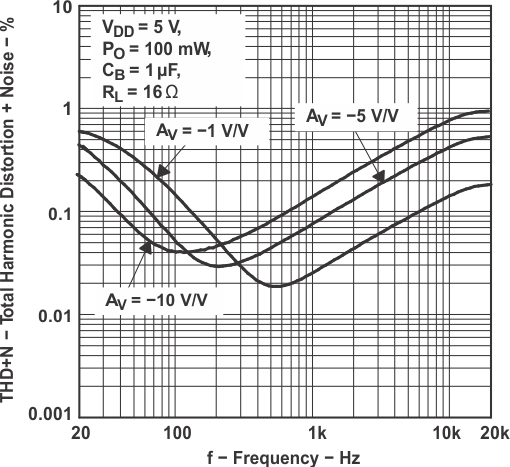 Figure 13. Total Harmonic Distortion + Noise vs Frequency
Figure 13. Total Harmonic Distortion + Noise vs Frequency
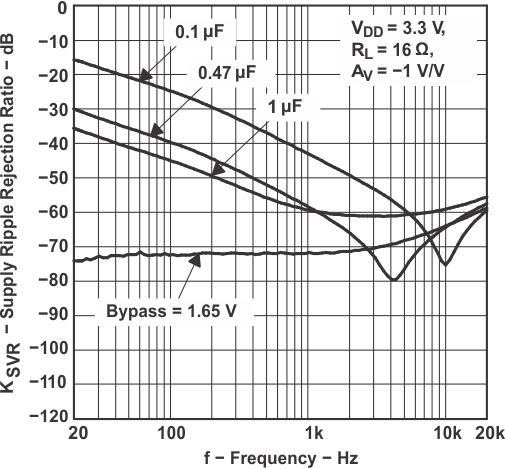 Figure 15. Supply Ripple Rejection Ratio vs Frequency
Figure 15. Supply Ripple Rejection Ratio vs Frequency
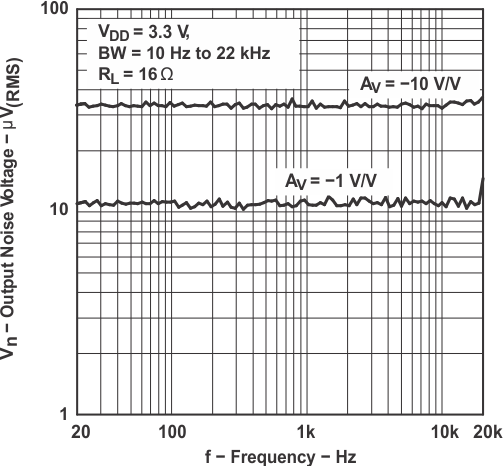 Figure 17. Output Noise Voltage vs Frequency
Figure 17. Output Noise Voltage vs Frequency
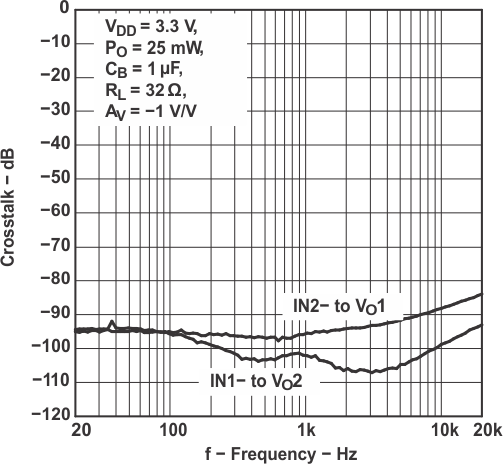 Figure 19. Crosstalk vs Frequency
Figure 19. Crosstalk vs Frequency
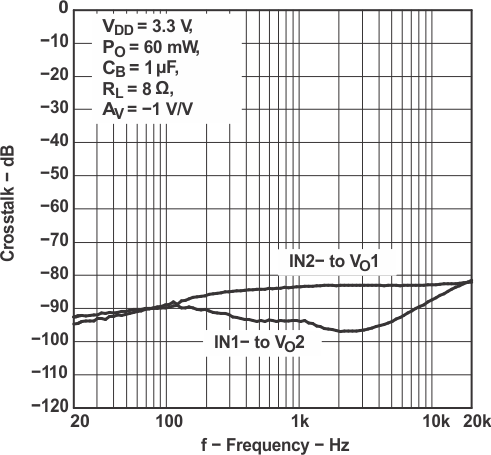 Figure 21. Crosstalk vs Frequency
Figure 21. Crosstalk vs Frequency
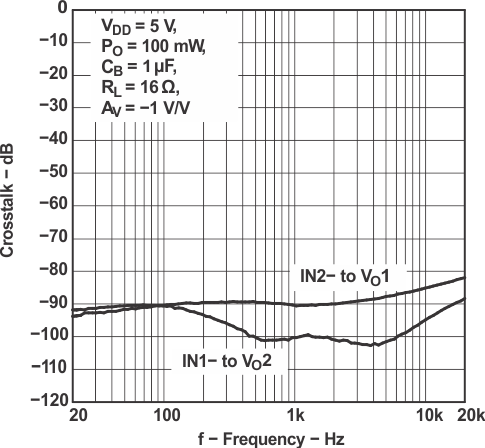 Figure 23. Crosstalk vs Frequency
Figure 23. Crosstalk vs Frequency
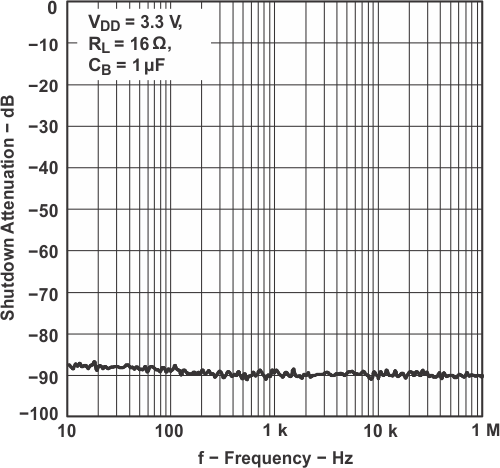 Figure 25. Shutdown Attenuation vs Frequency
Figure 25. Shutdown Attenuation vs Frequency
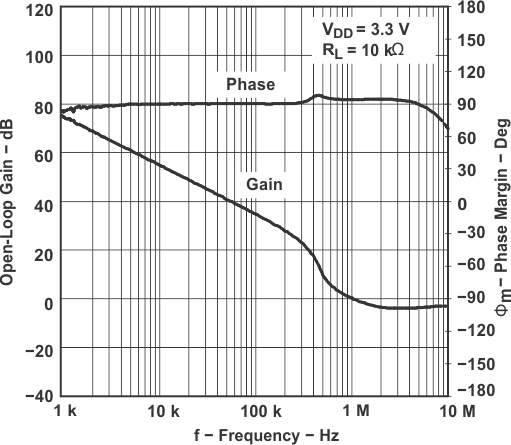 Figure 27. Open-Loop Gain and Phase Margin vs Frequency
Figure 27. Open-Loop Gain and Phase Margin vs Frequency
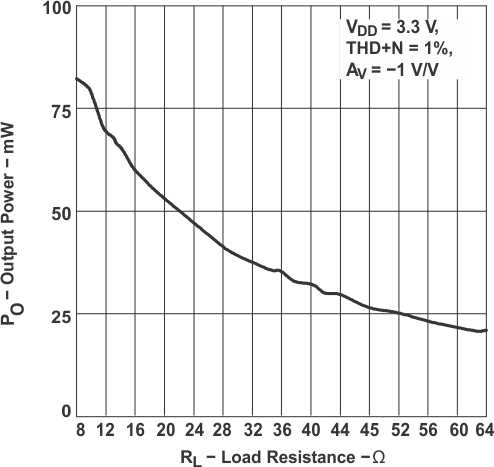 Figure 29. Output Power vs Load Resistance
Figure 29. Output Power vs Load Resistance
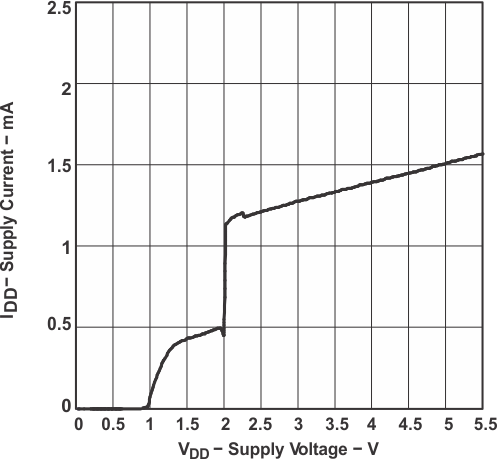 Figure 31. Supply Current vs Supply Voltage
Figure 31. Supply Current vs Supply Voltage
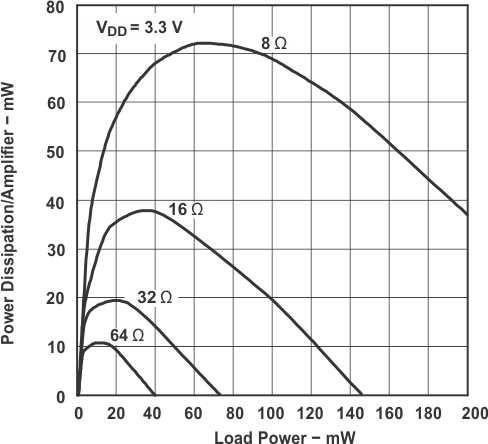 Figure 33. Power Dissipation and Amplifier vs Load Power
Figure 33. Power Dissipation and Amplifier vs Load Power
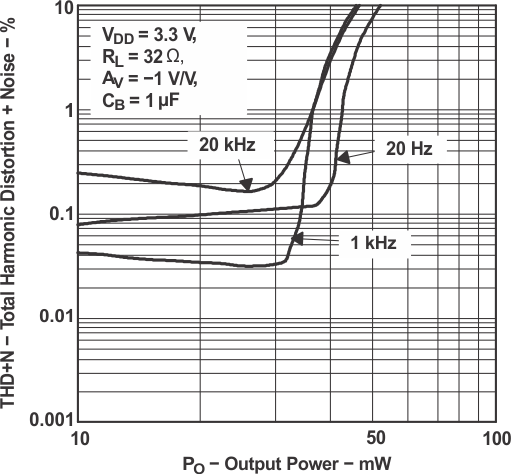 Figure 2. Total Harmonic Distortion + Noise vs Output Power
Figure 2. Total Harmonic Distortion + Noise vs Output Power
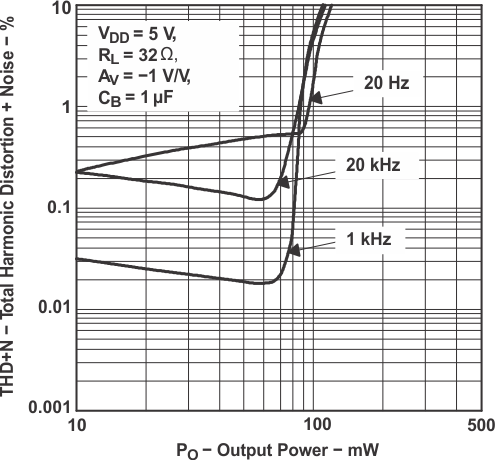 Figure 4. Total Harmonic Distortion + Noise vs Output Power
Figure 4. Total Harmonic Distortion + Noise vs Output Power
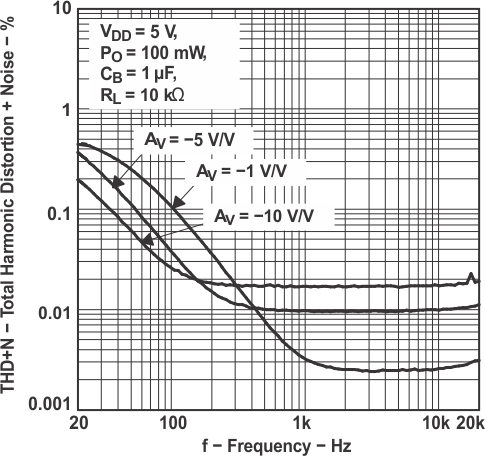 Figure 6. Total Harmonic Distortion + Noise vs Frequency
Figure 6. Total Harmonic Distortion + Noise vs Frequency
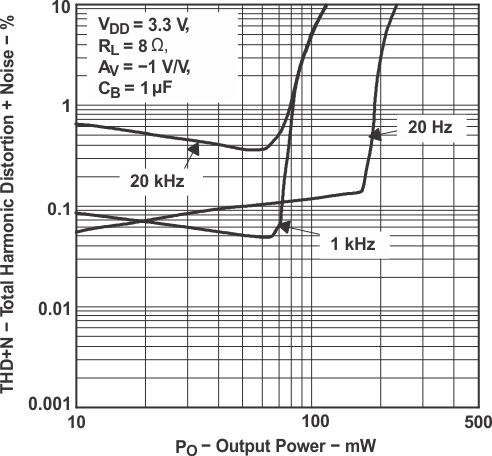 Figure 8. Total Harmonic Distortion + Noise vs Output Power
Figure 8. Total Harmonic Distortion + Noise vs Output Power
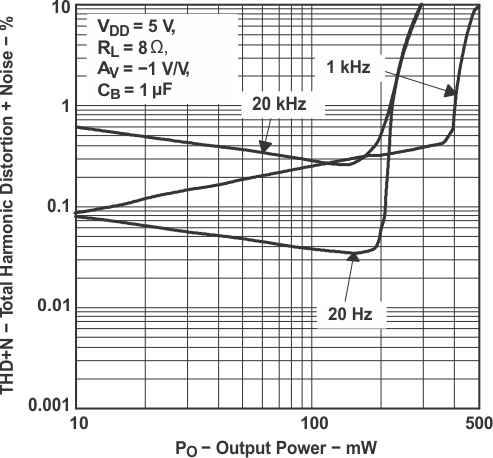 Figure 10. Total Harmonic Distortion + Noise vs Output Power
Figure 10. Total Harmonic Distortion + Noise vs Output Power
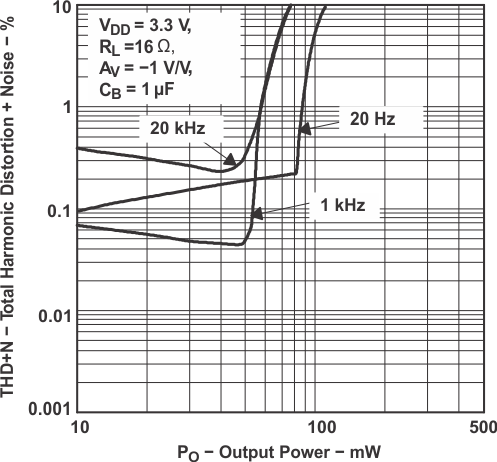 Figure 12. Total Harmonic Distortion + Noise vs Output Power
Figure 12. Total Harmonic Distortion + Noise vs Output Power
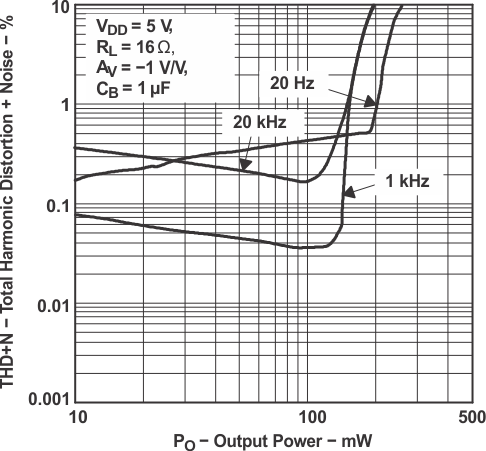 Figure 14. Total Harmonic Distortion + Noise vs Output Power
Figure 14. Total Harmonic Distortion + Noise vs Output Power
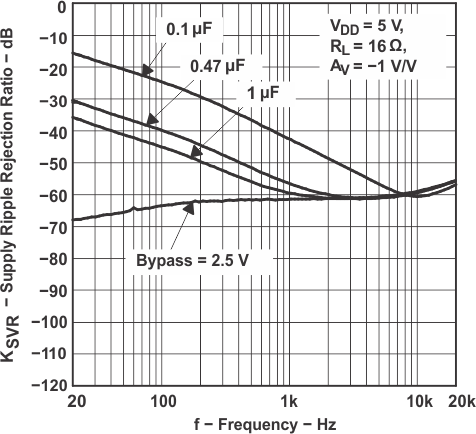 Figure 16. Supply Ripple Rejection Ratio vs Frequency
Figure 16. Supply Ripple Rejection Ratio vs Frequency
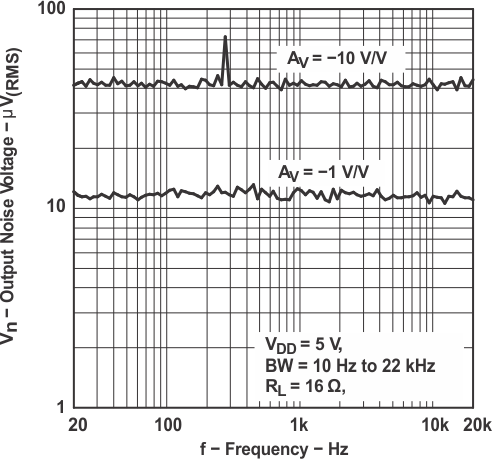 Figure 18. Output Noise Voltage vs Frequency
Figure 18. Output Noise Voltage vs Frequency
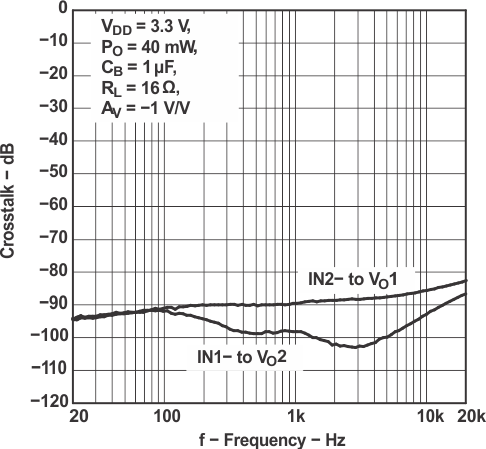 Figure 20. Crosstalk vs Frequency
Figure 20. Crosstalk vs Frequency
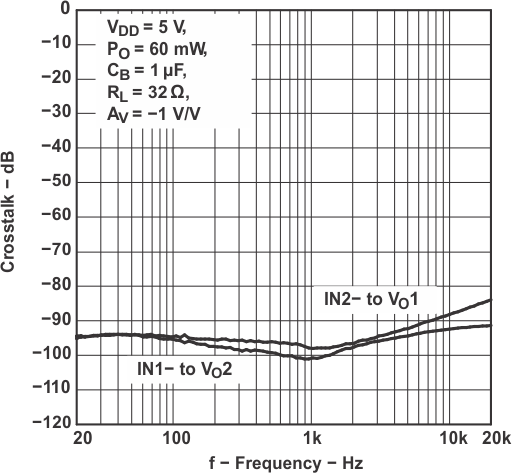 Figure 22. Crosstalk vs Frequency
Figure 22. Crosstalk vs Frequency
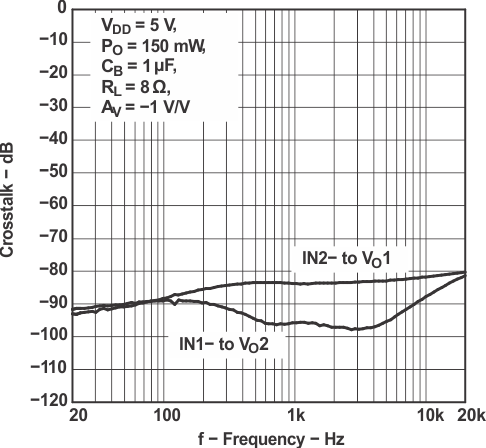 Figure 24. Crosstalk vs Frequency
Figure 24. Crosstalk vs Frequency
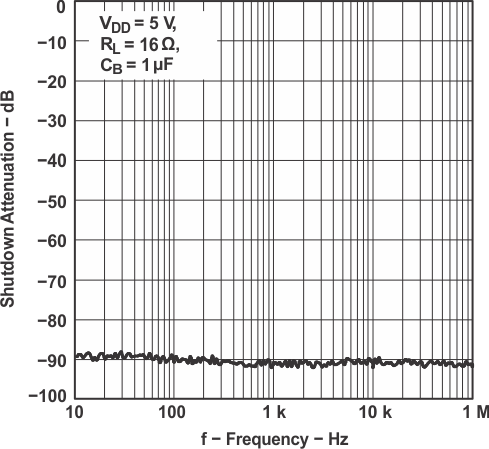 Figure 26. Shutdown Attenuation vs Frequency
Figure 26. Shutdown Attenuation vs Frequency
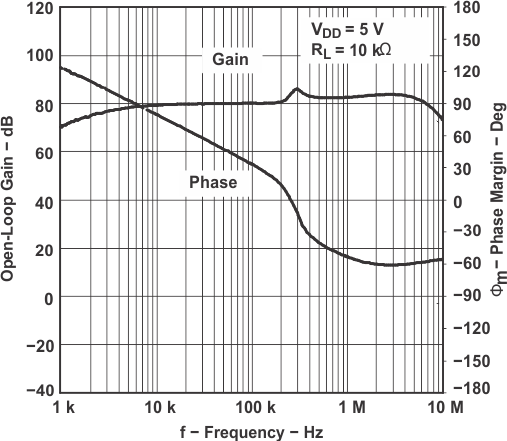 Figure 28. Open-Loop Gain and Phase Margin vs Frequency
Figure 28. Open-Loop Gain and Phase Margin vs Frequency
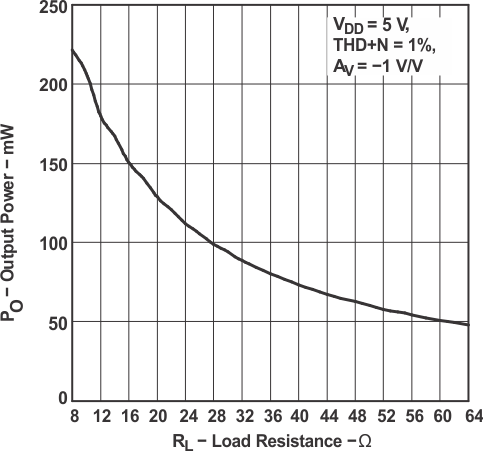 Figure 30. Output Power vs Load Resistance
Figure 30. Output Power vs Load Resistance
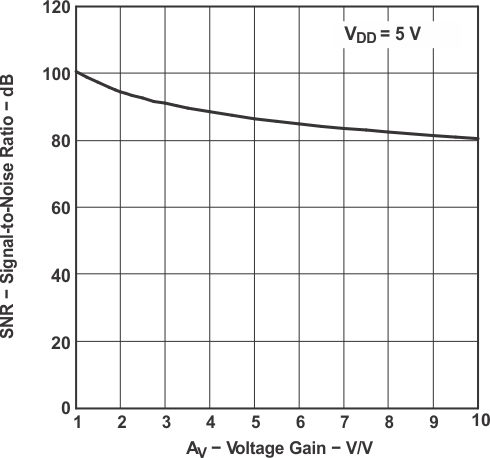 Figure 32. Signal-to-Noise Ratio vs Voltage Gain
Figure 32. Signal-to-Noise Ratio vs Voltage Gain
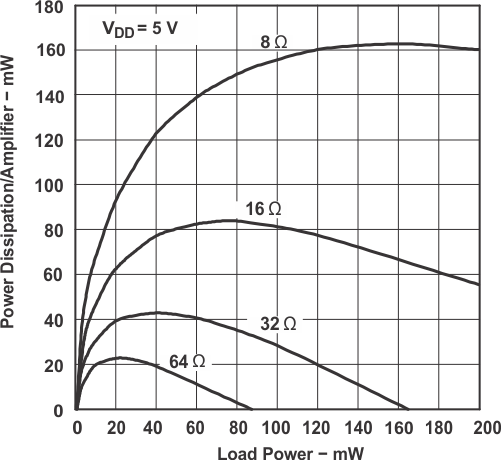 Figure 34. Power Dissipation and Amplifier vs Load Power
Figure 34. Power Dissipation and Amplifier vs Load Power